It looks like you're using an Ad Blocker.
Please white-list or disable AboveTopSecret.com in your ad-blocking tool.
Thank you.
Some features of ATS will be disabled while you continue to use an ad-blocker.
share:
originally posted by: Zaphod58
a reply to: TritonTaranis
Probably not. They only have one carrier to use them on, and it suffered pretty significant damage in a yard fire in 2019. It's not expected to complete its overhaul until early 2023 at the soonest, and not enter service until late that year. They're looking at possibly exporting it as an F-35 competitor for countries that either can't afford it, or don't have access to it. Most of those countries won't have need for a STOVL aircraft. Once upon a time the thinking was that you could land a Harrier in a remote location if your airfields were destroyed, and they could take off and land vertically. But the reality of that idea falls far, far short of the plans. Most countries are capable of operating off airfield using roads, which is actually better for the concept.
I suppose that’s true, seems the likely case it’s market thing when you say it like that makes sense
Russia absolutely can’t afford to lose its arms selling place in the world, neither the skill loss
A fat Su-57?! Why am I always wrong about everything... I wanted a single intake
Okay I have new theory... they have hidden the intake with wrap.
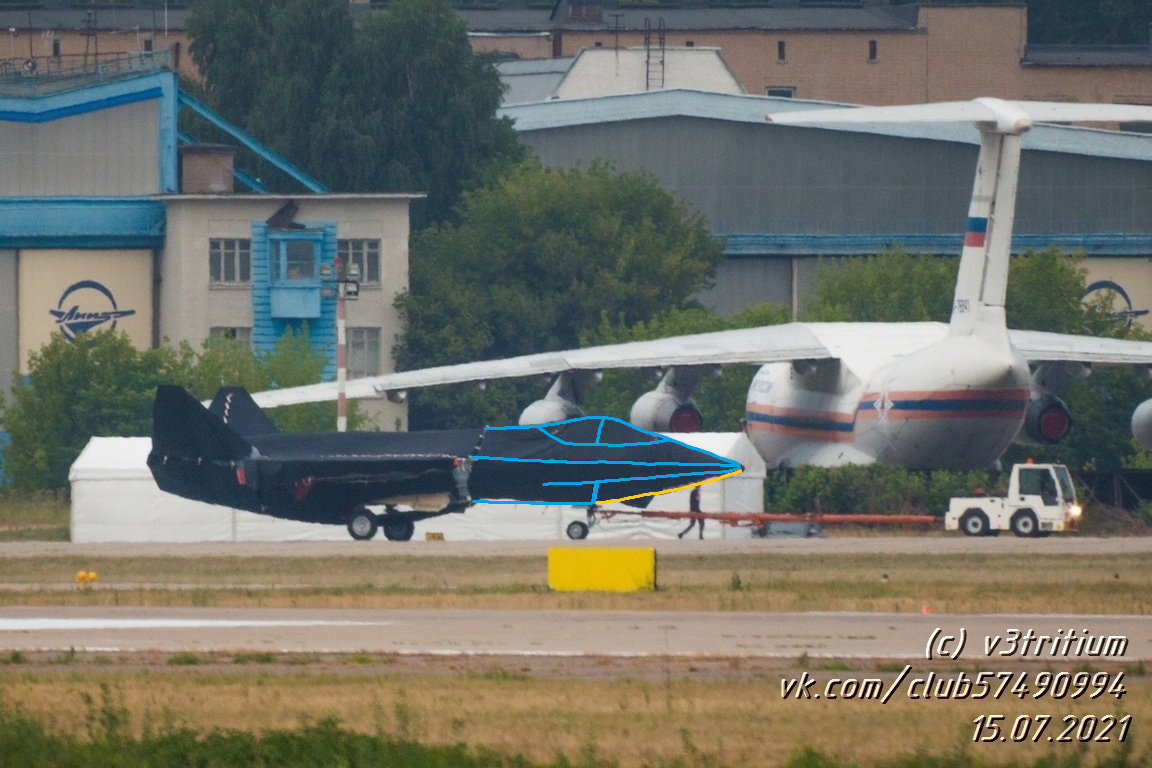
Okay I have new theory... they have hidden the intake with wrap.

edit on 15-7-2021 by E92M3 because: (no reason given)
edit on 15-7-2021 by E92M3 because: (no reason
given)
These things kill me, I'm worse with car launches though as you see the camo mules for years before launch!
edit on 15-7-2021 by E92M3
because: (no reason given)
originally posted by: Zaphod58
a reply to: anzha
More than likely they found the chin inlet was going to cause airflow issues at high AoA.
I don't know, maybe.
When NASA studied thrust-vectoring on the F-16 (paddles FTW!) they made no mention of a (gaping) chin inlet causing issues at extreme AoA, even in the "considerations" section of the report. In fact, they made NO mention of the inlets or intakes at all, save for one notation on radar-absorbing paint in the inlet for early Stealth capabilities.
This investigation was conducted to determine the advantages and disadvantages of using thrust
vectoring for lateral-directional control and the effects of reducing the tail size of a single-engine aircraft. The aerodynamic characteristics of the F-16 aircraft were generated by using the Aerodynamic
Preliminary Analysis System II panel code. The resulting lateral-directional linear perturbation analysis
of a modified F-16 aircraft with various tail sizes and yaw vectoring was performed at several speeds
and altitudes to determine the stability and control trends for the aircraft compared to these trends for
a baseline aircraft. A study of the paddle-type turning vane thrust vectoring control system as used
on the National Aeronautics and Space Administration F/A-18 High Alpha Research Vehicle is
also presented.
Here, read the report: ntrs.nasa.gov...
Of all the charts, I find find Figure 34 the most interesting. Check it out.
originally posted by: anzha
a reply to: E92M3
Nice find.
She has the height for a chin inlet.
She might be a brown bag special: boeing level fugly.
Easy there buddy, I'll have you know that a chin inlet is a very chic look.
duckduckgo.com...
a reply to: Blackfinger
Every time I look at it I see something new, so I'm just going to stop...
Will be hilarious if they pull off a STOVL out of nowhere though.
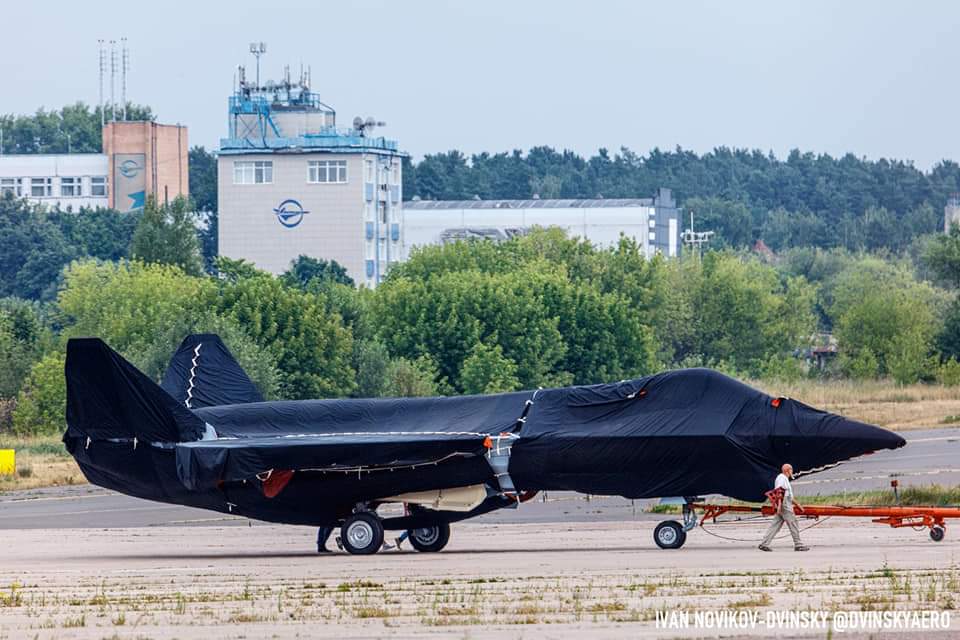
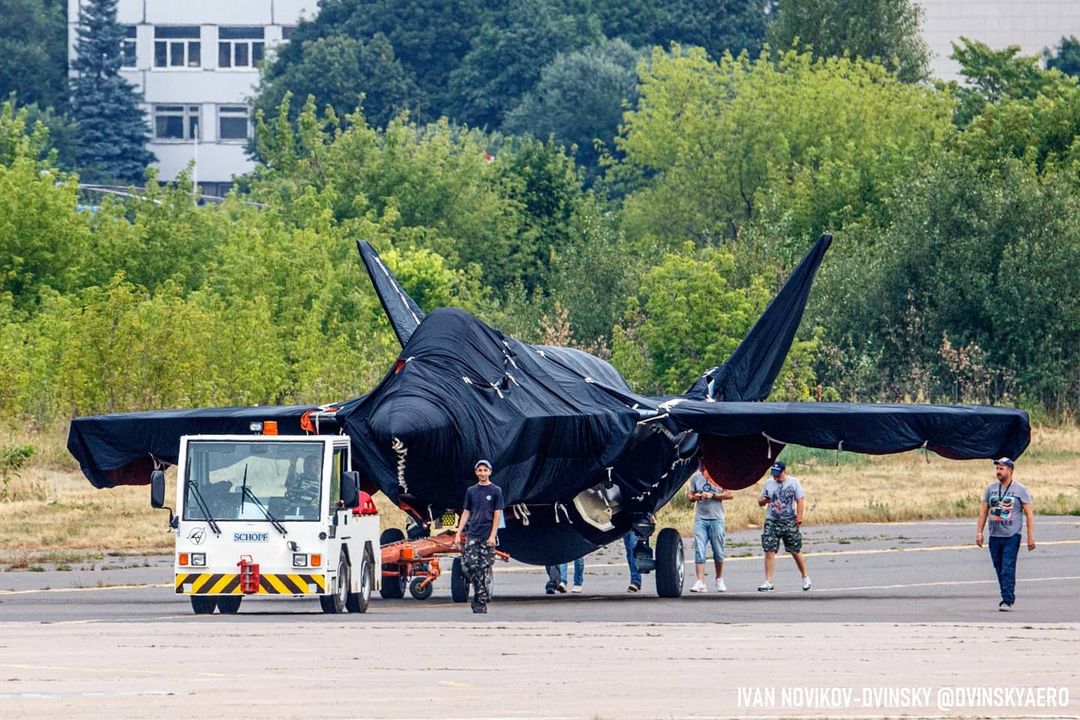
Every time I look at it I see something new, so I'm just going to stop...
Will be hilarious if they pull off a STOVL out of nowhere though.


originally posted by: Zaphod58
a reply to: anzha
More than likely they found the chin inlet was going to cause airflow issues at high AoA.
Question for the aviation engineers: presumably for low radar RCS you want inlets on top, so incoming radar, which is usually coming in from a slight angle down horizontally, is less likely to be a source of reflections.
But for aerodynamic performance, is that a problem? For instance, 4th generation F-14 and F-15 have lower inlets with a large 'scoop'. Are those particularly bad for radar RCS? Are they particularly good for performance?
Is there work on multiple inlets with covers on the high RCS ones for most uses and opening only when performance is needed? Is this too complex and unreliable?
a reply to: mbkennel
Location is less important than not allowing radar to hit the fan section and bounce back. If you look at the F-15, and F-16, you can see straight down to their fan section. So can the radar. If you look at the F-35, and F-22, their intakes curve in an s-shape. You can't see the fan section, and neither can radar. That allows you to put the intakes where they can get the most air to the engine, at all angles, while still keeping the engine blocked by radar.
Inlets on top, and on bottom to a degree, are restricted by AoA. If you have a top inlet, and you pull a high AoA maneuver. you get disturbed air into the inlet. That's bad for the engine and will cause problems at sustained high AoA positions.
F-14 intake:
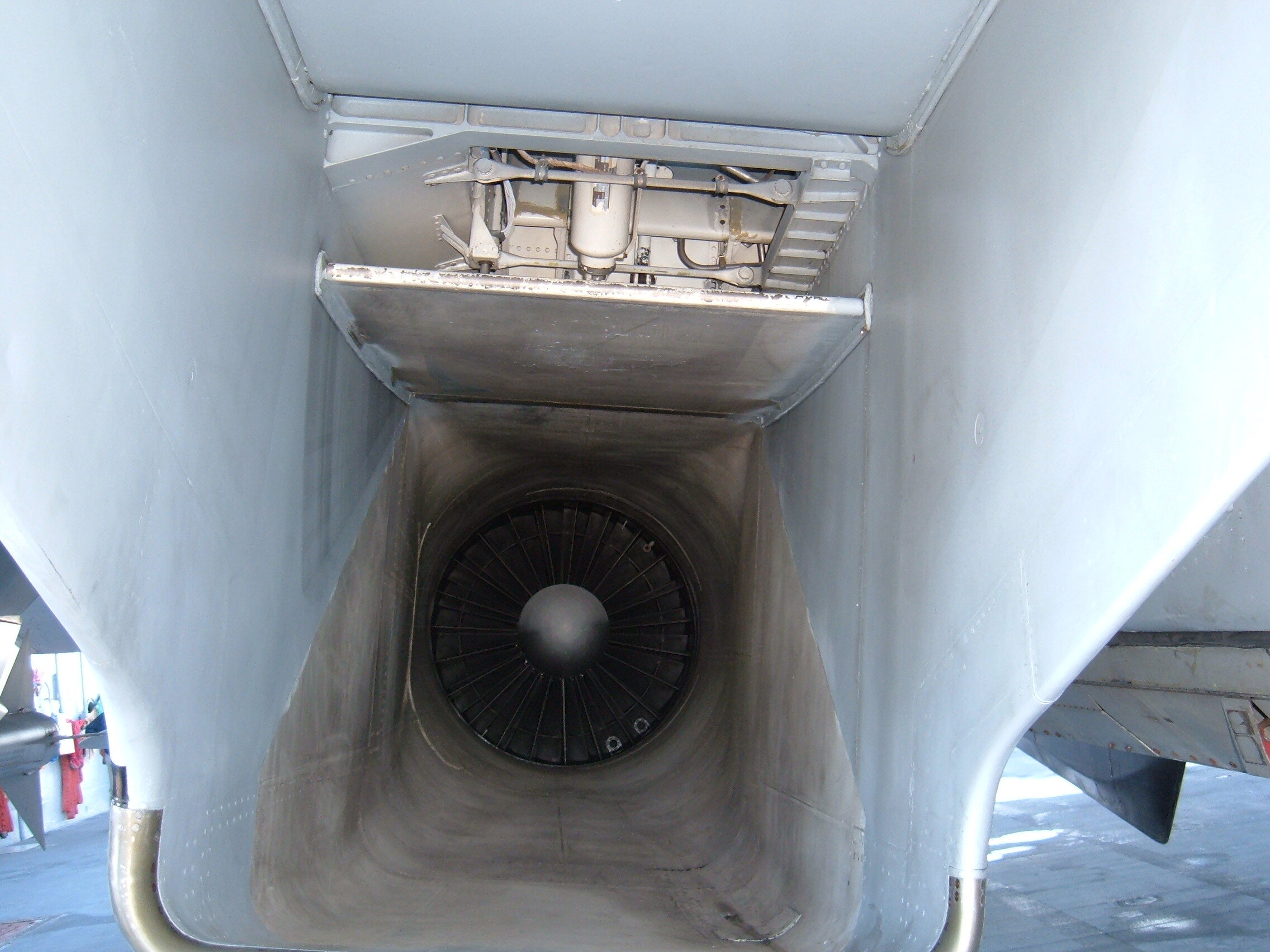
F-16 intake:
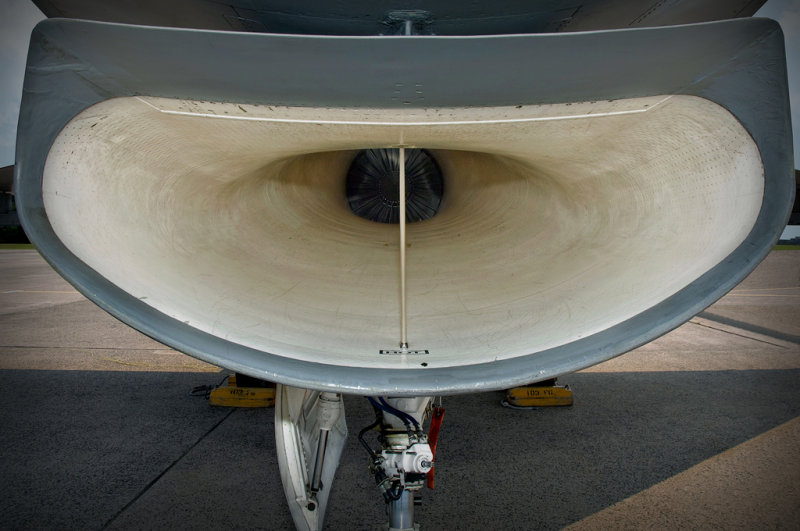
F-22 intake:
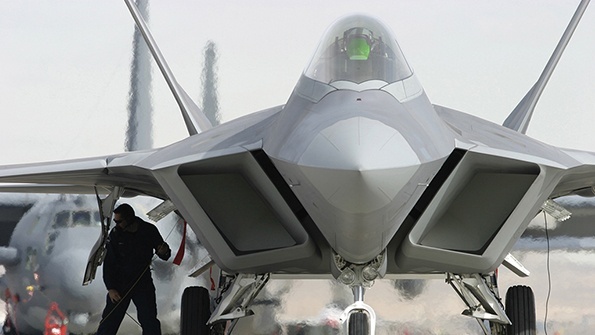
F-35 intake:
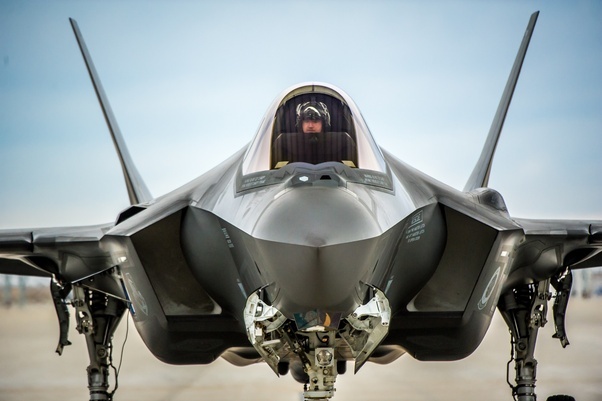
Location is less important than not allowing radar to hit the fan section and bounce back. If you look at the F-15, and F-16, you can see straight down to their fan section. So can the radar. If you look at the F-35, and F-22, their intakes curve in an s-shape. You can't see the fan section, and neither can radar. That allows you to put the intakes where they can get the most air to the engine, at all angles, while still keeping the engine blocked by radar.
Inlets on top, and on bottom to a degree, are restricted by AoA. If you have a top inlet, and you pull a high AoA maneuver. you get disturbed air into the inlet. That's bad for the engine and will cause problems at sustained high AoA positions.
F-14 intake:

F-16 intake:

F-22 intake:

F-35 intake:

new topics
-
The 'Censorship-Industrial Complex'. It is coming to a nation state near you, any time now...
New World Order: 1 minutes ago -
BREAKING: Astrazeneca admits for the first time its vaccine can cause deaths and serious injuries
Medical Issues & Conspiracies: 3 hours ago -
New Bombshell Evidence Strongly Suggests Trump was Set Up in Classified Docs Saga
US Political Madness: 8 hours ago -
One More Night at the Pig and Blanket (Time 2024)
Short Stories: 11 hours ago
top topics
-
New Bombshell Evidence Strongly Suggests Trump was Set Up in Classified Docs Saga
US Political Madness: 8 hours ago, 25 flags -
Jim Biden Was in Business with Qatari Officials
US Political Madness: 16 hours ago, 13 flags -
Expert Says Parents Should Ask Babies Permission to Change Nappies.
General Chit Chat: 12 hours ago, 10 flags -
BREAKING: Astrazeneca admits for the first time its vaccine can cause deaths and serious injuries
Medical Issues & Conspiracies: 3 hours ago, 8 flags -
Sleep paralysis and the implantation of some weird Matrix-esque demon creature...
The Gray Area: 17 hours ago, 8 flags -
I may have had a talk with Pope Francis about his plans for our nation
The Gray Area: 16 hours ago, 6 flags -
One More Night at the Pig and Blanket (Time 2024)
Short Stories: 11 hours ago, 5 flags -
Do you name your cars ?
General Chit Chat: 14 hours ago, 4 flags -
Hard evidence of a Royal plot on the US....if only i had proof.
ATS Skunk Works: 13 hours ago, 2 flags -
The 'Censorship-Industrial Complex'. It is coming to a nation state near you, any time now...
New World Order: 1 minutes ago, 0 flags
active topics
-
The 'Censorship-Industrial Complex'. It is coming to a nation state near you, any time now...
New World Order • 0 • : FlyInTheOintment -
SETI chief says US has no evidence for alien technology. 'And we never have'
Aliens and UFOs • 83 • : andy06shake -
I may have had a talk with Pope Francis about his plans for our nation
The Gray Area • 6 • : AlexandrosOMegas -
Hard evidence of a Royal plot on the US....if only i had proof.
ATS Skunk Works • 29 • : AlexandrosOMegas -
DONALD J. TRUMP - 2024 Candidate for President - His Communications to Americans and the World.
2024 Elections • 515 • : WeMustCare -
Candidate TRUMP Now Has Crazy Judge JUAN MERCHAN After Him - The Stormy Daniels Hush-Money Case.
Political Conspiracies • 818 • : WeMustCare -
New Bombshell Evidence Strongly Suggests Trump was Set Up in Classified Docs Saga
US Political Madness • 34 • : 19Bones79 -
Official denial
Diseases and Pandemics • 23 • : annonentity -
New whistleblower Jason Sands speaks on Twitter Spaces last night.
Aliens and UFOs • 77 • : gippo88 -
BREAKING: Astrazeneca admits for the first time its vaccine can cause deaths and serious injuries
Medical Issues & Conspiracies • 1 • : Markovian2





